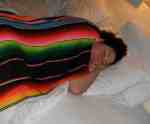This week marked the third Monday since Daylight Saving Time started. I should be used to it by now. But I slept right through the alarm—classical music from PBS—that melded smoothly into my dreams. Perhaps I should change the station back to the hard rock format I usually prefer. In any case, this past Monday, I had to drag myself out of bed…again.
Please leave your comments below…I could use your advice!
Now, I am a serious fan of daylight—I wait for the March equinox like some people wait for March Madness. The March, or vernal, equinox is when our 24-hour day is more or less equally divided into 12 hours of light and 12 hours of dark, and usually occurs around March 20. (Note: March equinox and September equinox are the terms preferred to avoid Northern Hemisphere bias, when March is in the spring and September is in the autumn.) The first point of the tropical zodiac sign Aries and the first point of Libra are the names used by navigators and astrologers. See my essay post about being a Libra.
I’ve also learned…
…that although the word equinox is often understood to mean “equal [day and] night,” this is not strictly true. For most locations on earth, there are two distinct identifiable days per year when the length of day and night are closest to being equal; those days are referred to as the equiluxes to distinguish them from the equinoxes. Equinoxes are points in time, but equiluxes are days. By convention, equiluxes are the days where sunrise and sunset are closest to being exactly 12 hours apart.
This year, our switch to Daylight Saving Time (btw, it’s Saving, not Savings), occurred on March 2, so the light came on early, so to speak. More light means more of almost everything—more mountain biking, more meals on the patio, more time to sit in the sun with a clipboard and my favorite pen, ruminating and writing about life. So for me, Daylight Saving Time is a gift, a gift I received earlier than ever this year. There’s only one problem:
I’m a terrible insomniac.
Or a very good one, if you consider competency as something you do well and do frequently over a long period of time. So for me to lose one hour by “springing forward” a few Sundays ago unbalanced an already precarious détente between conscious and unconscious. At 2:00 a.m. on March 2, when we set our clocks to 3:00 a.m., my annual battle began. I indulged my brain by sleeping in that day; that is, dismantling the alarm and struggling to the surface of wakefulness on my own.
True, it has never been easy for me to get out of bed in the morning, but once I am up, I’m up! My morning routines of washing, brushing, dressing, and blending a protein shake for lunch can be accomplished in 20 minutes and I’m out the door. On some mornings, I don’t even look in the mirror after my toothbrush-and-mascara schedule. (The subject of mirrors is the topic of an upcoming blog essay…) I have always envied those who rise before they have to; people who read the paper, have coffee and conversation. People who throw in a load of laundry or contemplate what to have for dinner that evening. I’m just not one of them.
But I’m not alone, either.
Statistics show that we are more at risk for traffic accidents in the days after we spring forward. People are fuzzy. It’s dark again when we wake up. It takes most people about two weeks to adjust to the time change. I’m just not of them.
I wish I were one of them.
 For now though, I think I’ll just lie in bed—one eye on the clock, calculating the exact number of minutes I’ll need from feet-on-the-floor to out-the-door—and enjoy the longer daylight until we fall back and I get that blissful extra hour on November 6.
For now though, I think I’ll just lie in bed—one eye on the clock, calculating the exact number of minutes I’ll need from feet-on-the-floor to out-the-door—and enjoy the longer daylight until we fall back and I get that blissful extra hour on November 6.
AWDoray March 2011


